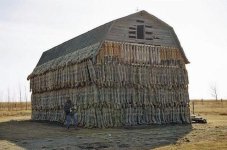My son and I have been giving coyote hunting a try, without much success. I've been using an old Foxpro electronic caller, but think I may have better luck with mouth calls. I'd like to give it a try at least.
I'd like to hear from an experienced coyote hunter what basic calls I should get. I've researched what I can on the internet, but there doesn't seem to be much consensus, and most folks are just selling something.
I was rated as an "expert" class caller by AZ's largest competitive predator calling club, by way of credentials, and I favor and recommend "open reed" style calls in general, and specifically Tal Lockwood's "Tally-Ho" brand call --- it's very versatile in terms of tone and volume, inexpensive, and effective. A little more difficult to master than fixed reed calls, but not very difficult, this style call offers the broadest range of utility, among the various alternatives.
That said, the actual call you use and the sounds you produce are probably the least important factors in determining your success in calling coyotes to within shooting range --- which in my experience is about two-to-one shotgun range rather than rifle range (2 oz. buffered BB in 3" 12 ga.) Some abbreviated pointers ---
Call where you already know there are coyotes --- scout for tracks, droppings, listen for howling at dawn and dusk.
Be mindful of your approach to calling sites, "muffle" your vehicle in every way --- take the rattling junk out of the truck bed, leave the radio or CD player off, park in depressions or in brush cover, don't slam the doors or tailgate, talk out loud, or otherwise give coyotes notice that you've arrived.
Sneak into the "stand" site, moving upwind, not on a ridgeline where you're "skylined" or silhouetted, and choose calling positions where you're not silhouetted, and which provide the broadest, most panoramic view of the upwind area. and fewest obstacles in terms of lines of fire, (you'll almost never call coyotes very close if they catch your scent, and they will, if they get downwind of you..) --- think "military summit". Sit in shadow, with brush or etc. behind you, to break up your outline.
Wear camo clothes, a broad-brimmed hat to keep your face and neck in shadow, long-sleeved shirt, camo gauze mesh face mask to conceal hand movement while manipulating
calls, camo paint or otherwise dull-down reflective surfaces on guns and gear for glint free operation.
Better yet, PM me, and I'll mail you copies of my writings on the subject, which you may find helpful...




